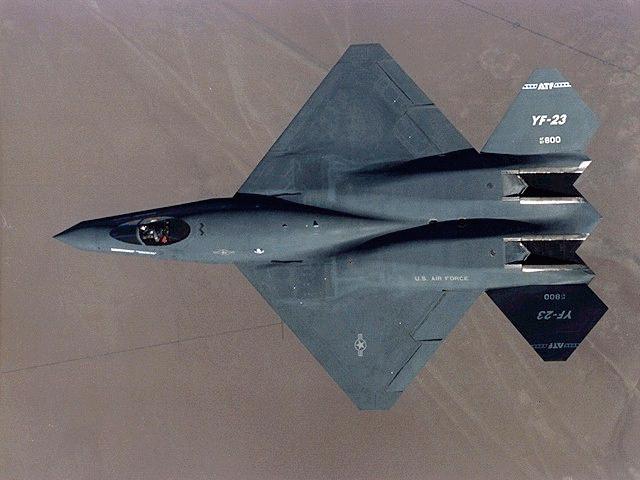
There are no flaps on this plane. Those are not flaps that you see there.
Posted on 09/27/2010 10:46:46 AM PDT by managusta
The DEMON uses output from the jets to control airflow over the plane, manipulating lift and drag without using traditional mechanisms to steer.
Its developers believe the technology could revolutionize the stealth capabilities of military aircraft by reducing edges and gaps that can be picked up on radar.
The technology could also reduce fuel and maintenance costs for commercial airliners.
Professor John Fielding, chief engineer and lead for the DEMON demonstrator team from Cranfield University, said: ''To make an aircraft fly and maneuver safely without the use of conventional control surfaces is an achievement in itself.
The DEMON was developed around a concept called ''fluidic flight control'' and is designed to forgo the use of conventional mechanical elevators and ailerons, or flaps.
It is instead maneuvered by hundreds of tiny jets that blast air in order to influence to change the lift, drag and other features of performance.
The result is a more streamlined, aerodynamic craft that cuts down on edges and gaps - features that can increase radar detection.
Additionally it cuts down the number of moving and electrical parts in both military and civil aircraft, affecting cost, reliability, weight, efficiency and maintenance.
(Excerpt) Read more at telegraph.co.uk ...
ML/NJ
Of course so is a lot of LO technology so may be it's something the operator would already have to consider.
“The DEMON was developed around a concept called ‘’fluidic flight control’’ and is designed to forgo the use of conventional mechanical elevators and ailerons, or flaps. “
Back when I was in airplane school, we’d laugh at presstitute “experts” who made idiotic statements like this...

There are no flaps on this plane. Those are not flaps that you see there.
F-16, perhaps as it is inherently unstable, but not the F-15 or F-18.
Loss of power does not cause an issue, per se, it is the loss of hydraulic power, as the flight controls are hydraulically actuated. Lose an engine, windmilling keeps some hydraulic pressure and ensures some flight control.
Just to be clear.
Already done.
Al Haynes/UA 232.
Worked out fine, except for that little problem of losing a third of your passengers and can’t use the airplane again.

Technically, they are called ailerons. See how they are offset, on the right up and on the left down.. to cause a roll. There is no rudder (vertical stabilizer), tailplane (horizontal stabilizer) or "flaps" which are extended to increase lift on take-off and landing.
For what, it is unmanned.
Beat me to it.
Sure looks like it has flaps to me.
I think that the aircraft most definitely has some control surfaces that are deflected in a conventional manner. But it also has a few that do not deflect but are hooked up to tubes for blowing.
The aircraft seems to just be a technology test-bed where conventional control surfaces can be swapped out for the forced-air kind.
F-117.
It is only a series of computers voting on how to interpret pilot requests that differentiate planes like the F-117 from a tumbling brick.
If it loses power, it becomes a lawn dart
Aircraft don’t use flaps to “manoeuvre” with, they use ailerons, rudder and elevator. Flaps increase lift allowing steeper approach and departure angles without increasing airspeed requirements.
Power loss indicates it is “Time for a quick trip around the beads and ‘over the side’.”
I wouldn't be surprised if these actually functioned as "flaperons" the inner surfaces acting more like flaps on take-off and landing and still being available for in-flight attitude correction. I believe they are far more important than the writer implies because they are likely are extremely important to making it possible for the thing to fly.
However, On the leading edge you can almost see holes so they could be controlling the flow of air across this as some older low speed takeoff and landing craft did in the past. The white section is most probably fixed and has air piped to it as well, you can see the holes on the trailing edge in this section and the air hoses.
These probably give two different sets of holes airflow based on wanting to bias the wing to lift or descend. This is probably what they are going on about. In at speed stable flying, the "flaperons" just act like wing surface and control is provided by altering the ducting of air to these surfaces.
Statement I was responding to was encompassing, which as you know, is not true.
Thanks for clarifying your statement.
Disclaimer: Opinions posted on Free Republic are those of the individual posters and do not necessarily represent the opinion of Free Republic or its management. All materials posted herein are protected by copyright law and the exemption for fair use of copyrighted works.